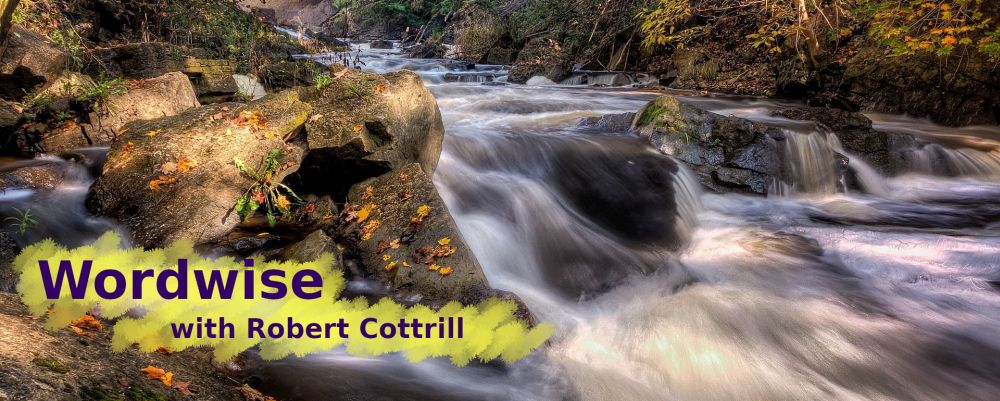I Am His and He Is Mine
Words: George Wade Robinson (b. _____, 1838; d. Jan. 18, 1877)
Music: Everlasting Love, by James Mountain (b. July 16, 1844; d. June 27, 1933)
Note: This hymn is also called Loved with Everlasting Love. James Mountain wrote the tune specifically for these words, when the song was first published in 1876.
(Stanza numbers in brackets below refer to the stanza number in The Cyber Hymnal. Find the link at the bottom of the article.)
It doesn’t have to be divine love to teach us some great lessons. Guy meets gal and they fall in love. Suddenly, “Heaven above is softer blue, earth around is sweeter green” (2). Everything sparkles with new life and beauty, as though they’re seeing it clearly for the first time. And if that is true of what happens when we experience the love of another human being, to what infinite degree can it be lifted in the experience of God’s love.
Sadly, human love may not endure, but God’s always will. The Bible gives us a long list of things that might, in the thinking of some, cause us to lose the blessing of His love, saying, “[No, none of these] shall be able to separate us from the love of god which is in Christ Jesus our Lord” (Rom. 8:35-39).
Missionary to India, Henry Martyn (1781-1812) wrote in his diary of the transforming power God’s love in saving him. In fact, George Robinson may have got the idea for his hymn from there. Martyn wrote:
“Since I have known God in a saving manner, painting, poetry, and music have had charms unknown to me before; for religion has refined my mind, and made it susceptible of impression from the sublime and beautiful.”
Henry Martyn
The perception of God’s love comes to us through His Spirit-inspired Word, and through the gracious ministrations of the Spirit in the believer’s heart.
(1) Loved with everlasting love, led by grace that love to know;
Gracious Spirit from above, Thou hast taught me it is so!
O this full and perfect peace! O this transport all divine!
In a love which cannot cease, I am His, and He is mine.
In a love which cannot cease, I am His, and He is mine.
And it’s not only the world of nature that is seen with new eyes when our souls begin to appreciate the depth and enduring nature of the love of God. In addition, things that once worried and bothered us are seen in a new way. Like John, the disciple “whom Jesus loved” resting on His bosom (Jn. 13:23), we find comfort in intimate fellowship with Him.
(3) Things that once were wild alarms cannot now disturb my rest;
Closed in everlasting arms, pillowed on the loving breast.
O to lie forever here, doubt and care and self resign,
While He whispers in my ear, I am His, and He is mine.
While He whispers in my ear, I am His, and He is mine.
Human frailty being what it is, we aren’t always worry-free – an idealistic idea which might be taken from Robinson’s third stanza. But we do learn to cast our cares upon the Lord, with the knowledge that He will lovingly care for His own (I Pet. 5:7).
We first encounter divine love at Calvary. He loved us so much that He sent His Son to die in our place, bearing the penalty of our sin. “In this is love, not that we loved God, but that He loved us and sent His Son to be the propitiation for our sins” (I Jn. 4:10; cf. Jn. 3:16). We cling to the cross, and claim the remedy we need, by faith.
Then, as we go on in our Christian lives, we learn more. Paul’s prayer for the Ephesian believers is a suitable prayer for each of us:
“[That we] may be able to comprehend with all the saints what is the width and length and depth and height–to know the love of Christ which passes knowledge; that [we] may be filled with all the fullness of God.”
Eph. 3:18-19
“[God] has loved us and given us everlasting consolation and good hope by grace” (II Thess. 2:16). Who could ask for more that to be loved forever by Almighty God?
(4) His forever, only His; who the Lord and me shall part?
Ah, with what a rest of bliss Christ can fill the loving heart!
Heav’n and earth may fade and flee, firstborn light in gloom decline;
But while God and I shall be, I am His, and He is mine.
But while God and I shall be, I am His, and He is mine.
Questions:
- Why does God love us so much?
- What are some particular manifestations of the love of God in your life, right now?

